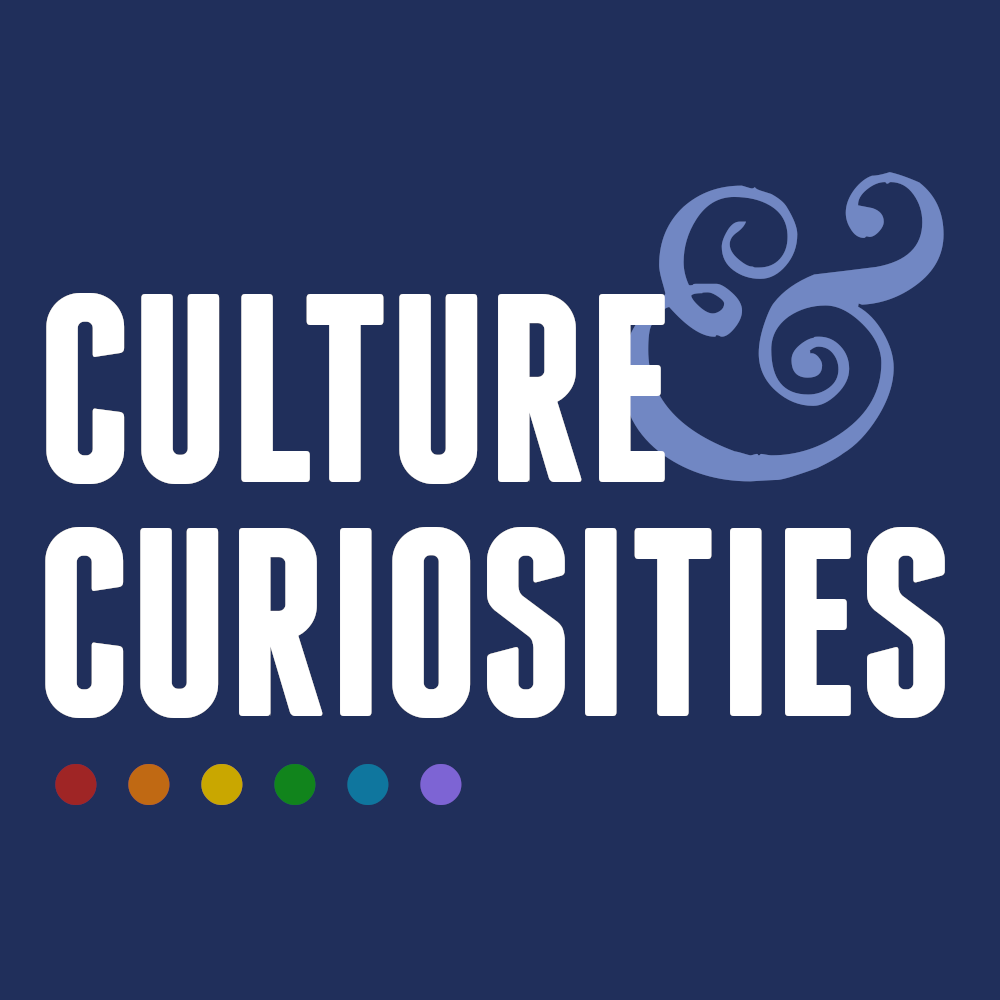|
This morning Jane-Anne Shaw, a PhD student in Classics in Britain, posted a five-star review of my Jason and the Argonauts through the Ages on Amazon.co.uk. Hers is, so far as I know, the first review of my book, and I’m glad it was a nice one: This is an extremely readable new paperback volume on an old myth. To examine, classify and rationalise the ancient figure of Jason (aka Iason - no ‘J’ in Classical Greek) Colavito has amassed a huge amount of material from the archaic Greek Mycenaean period down to our own era. […] It is not a heavy read - Colavito is clear and lucid - albeit stylistically I would place it towards the academic end of the Classical Studies spectrum. This does not detract from it at all - it is not a specialist book, and I imagine it will be of use to students as well as any general reader interested in the myth of Jason and the Argonauts. A bit of disclosure: Several weeks ago Shaw asked me to put her in contact with my publisher so she could request a review copy. We did not discuss my book or my thoughts on Jason before she reviewed the book.
45 Comments
First, a brief update: Yesterday I received the first proof copy of the hardcopy edition of Cthulhu in World Mythology. It’s undergoing a final set of corrections, and then it should be available for sale at Atomic Overmind and on sites like Amazon and Barnes & Noble shortly. So, if you’ve been waiting for the print edition to order your copy, the wait is almost over!
Linda Moulton-Howe and the Alaska Pyramid Here’s a bizarre claim I didn’t know about. I have no idea how I missed it. In March the Humans Are Free fringe website reported a claim that Ancient Aliens pundit and fringe author Linda Moulton-Howe made in 2012 that a major pyramid had been discovered in Alaska. The Humans Are Free article appears to be derived, sometimes verbatim, from pieces that ran on Moulton-Howe’s Earth Files in 2012, but which are now locked behind a membership paywall. Similar articles appeared on numerous other sites such as Before It’s News in 2013, all derived from the same source. It’s no wonder that Showtime sent two episodes of Penny Dreadful to TV critics for their review. As you will no doubt recall, I found the pilot episode to be disjointed and slipshod, but last night’s second episode was everything that its predecessor was not. The program shows much more control over its style, and individual scenes have a more rigorous aesthetic, extending from the improved set design to a more controlled set of color palettes. If the whole still doesn’t quite add up to more than the sum of its parts—there is still no unity in terms of color palettes, and the cinematography fails to rise much above standard TV blocking, with intermittent and obvious CGI backgrounds contrasting poorly with on-location shots—it is a marked improvement over the aesthetics of the first episode. All the same, the subject matter really could stand a bit more stylization in the visuals an a bit more epic a feel.
Biblical researcher and H. P. Lovecraft scholar Robert M. Price discussed my Cult of Aliens Gods (2005) on his Lovecraft Geek podcast recently (episode 11), and while he says that my book is “worth a look” he also complains that my book fails to adequately credit him and his colleague Charles Garofalo for their 1982 Crypt of Cthulhu article “Chariots of the Old Ones” in which they pointed to the parallels between H. P. Lovecraft’s fiction and the work of Erich von Däniken. After noting that their article appears in my bibliography, Price says that in the body text “he doesn’t give us any credit. His case, though more extensive, is so similar to what Garofalo and I said. I wonder if he even got the idea from there. But it doesn’t really matter. […] [Colavito’s] book certainly is interesting, but I don’t remember the title of it.”
I have always had the utmost respect for Price and his work on Lovecraft, and I have cited him repeatedly in my own work over the years, so this was a bit of a surprise. (Disclosure: We have never met, and Price has never responded to my intermittent efforts to communicate with him about Lovecraftian issues over the last decade.) Note for the easily offended: Please note that I regularly report on what audience members have to say about popular fringe history claims. I recently, for example, discussed a woman who said Ancient Aliens convinced her she was abducted by aliens. Discussion of how audience members choose to use fringe claims and integrate them into their worldviews does not imply that the originators of the claims endorse said worldviews, only that they should be aware of how their readers and viewers approach and understand their claims.
Extremists tend to see what they want to see, but there are times when what extremists see shocks and surprises even me. That was the case today when I discovered some recent and shocking reactions to America Unearthed that point toward the contradictory ways fringe history claims can be woven into political ideology. Several alert readers sent me links to a variety of news articles announcing the discovery of a 12,000 year old skeleton in the Yucatán Peninsula, which was reported yesterday in the online version of the journal Science in the article “Late Pleistocene Human Skeleton and mtDNA Link Paleoamericans and Modern Native Americans.” The bones, which were discovered underwater along with the remains of Ice Age fauna, are among the oldest ever found in the Americas. Tests of her mitochondrial DNA, however, are causing even more of a stir, helping to pinpoint the origin of the first Americans—and suggesting that some of the wilder claims about their origins are wrong.
West Virginia Museum: "Accelerating Probability" Europeans Reached America Thousands of Years Ago5/15/2014 Last year I wrote a piece on the history of the Grave Creek Stone, also called the Grave Creek Tablet, a mysterious rock with alleged Old World characters found in Grave Creek mound in what is now West Virginia in 1838. As I discussed at the time, there is good evidence that the rock had been hoaxed by lost race theorist James W. Clemens, who had tried to exploit the mound as part of a money-making scheme and desperately needed an “Old World” discovery to help him make the dig a success. The Smithsonian’s Bureau of Ethnology reviewed the find and concluded it was most likely a hoax, earning the artifact a spot on the list of supposed finds that the Smithsonian took efforts to suppress.
Butler University religion professor James L. McGrath has an interesting article in the spring issue of the Phi Kappa Phi Forum in which he explores the connection between science fiction and religion. Given my own interest in the connection between speculative fiction and fringe history, I found his discussion to be engaging, if (understandably) somewhat incomplete.
Alternative and fringe authors have been arguing that white people dominated the Americas for hundreds of years, beginning with the clergymen who first visited the New World in the wake of the Conquistadors. A lively debate emerged in the 1500s and 1600s about whether the Americas had been visited by apostles of Christ, European priests, or various saints. St. Thomas was one of the most popular candidates for the great white civilizer of the Americas, and of course Gerónimo de Mendieta’s account of Quetzalcoatl in Historia eclesiástica Indiana 2.10 is the most important foundation for claims that Native Americans worshiped Caucasians as deities.
Surely there is something about fringe history beliefs that curdles even the most fertile of minds once faith supplants facts in the minds of the true believer. Have you ever heard of Richard J. Dewhurst? Dewhurst began his career producing legitimate work. He graduated from NYU with a degree in journalism and worked for ABC News, The Miami Herald, PBS, Fox, and many other outlets, including the History Channel. He also says he won an Emmy for his work on an HBO documentary about the Vietnam War, though his name does not appear in the Academy of Television Arts and Sciences’ online records. According to the Academy, the Emmys were awarded to writer Bill Couturie and producer Thomas Bird for Dear America: Letters Home from Vietnam (1988), although Dewhurst was a credited writer on the project according to IMDB.
|
AuthorI am an author and researcher focusing on pop culture, science, and history. Bylines: New Republic, Esquire, Slate, etc. There's more about me in the About Jason tab. Newsletters
Enter your email below to subscribe to my newsletter for updates on my latest projects, blog posts, and activities, and subscribe to Culture & Curiosities, my Substack newsletter.
Categories
All
Terms & ConditionsPlease read all applicable terms and conditions before posting a comment on this blog. Posting a comment constitutes your agreement to abide by the terms and conditions linked herein.
Archives
April 2024
|
- Home
- Blog
- Books
-
Articles
-
Newsletter
>
- Television Reviews >
- Book Reviews
- Galleries >
- Videos
-
Collection: Ancient Alien Fraud
>
- Chariots of the Gods at 50
- Secret History of Ancient Astronauts
- Of Atlantis and Aliens
- Aliens and Ancient Texts
- Profiles in Ancient Astronautics >
- Blunders in the Sky
- The Case of the False Quotes
- Alternative Authors' Quote Fraud
- David Childress & the Aliens
- Faking Ancient Art in Uzbekistan
- Intimations of Persecution
- Zecharia Sitchin's World
- Jesus' Alien Ancestors?
- Extraterrestrial Evolution?
- Collection: Skeptic Magazine >
- Collection: Ancient History >
- Collection: The Lovecraft Legacy >
- Collection: UFOs >
- Scholomance: The Devil's School
- Prehistory of Chupacabra
- The Templars, the Holy Grail, & Henry Sinclair
- Magicians of the Gods Review
- The Curse of the Pharaohs
- The Antediluvian Pyramid Myth
- Whitewashing American Prehistory
- James Dean's Cursed Porsche
-
Newsletter
>
-
The Library
-
Ancient Mysteries
>
-
Ancient Texts
>
- Mesopotamian Texts >
-
Egyptian Texts
>
- The Shipwrecked Sailor
- Dream Stela of Thutmose IV
- The Papyrus of Ani
- Classical Accounts of the Pyramids
- Inventory Stela
- Manetho
- Eratosthenes' King List
- The Story of Setna
- Leon of Pella
- Diodorus on Egyptian History
- On Isis and Osiris
- Famine Stela
- Old Egyptian Chronicle
- The Book of Sothis
- Horapollo
- Al-Maqrizi's King List
- Teshub and the Dragon
- Hermetica >
- Hesiod's Theogony
- Periplus of Hanno
- Ctesias' Indica
- Sanchuniathon
- Sima Qian
- Syncellus's Enoch Fragments
- The Book of Enoch
- Slavonic Enoch
- Sepher Yetzirah
- Tacitus' Germania
- De Dea Syria
- Aelian's Various Histories
- Julius Africanus' Chronography
- Eusebius' Chronicle
- Chinese Accounts of Rome
- Ancient Chinese Automaton
- The Orphic Argonautica
- Fragments of Panodorus
- Annianus on the Watchers
- The Watchers and Antediluvian Wisdom
-
Medieval Texts
>
- Medieval Legends of Ancient Egypt >
- The Hunt for Noah's Ark
- Isidore of Seville
- Book of Liang: Fusang
- Agobard on Magonia
- Book of Thousands
- Voyage of Saint Brendan
- Power of Art and of Nature
- Travels of Sir John Mandeville
- Yazidi Revelation and Black Book
- Al-Biruni on the Great Flood
- Voyage of the Zeno Brothers
- The Kensington Runestone (Hoax)
- Islamic Discovery of America
- The Aztec Creation Myth
-
Lost Civilizations
>
-
Atlantis
>
- Plato's Atlantis Dialogues >
- Fragments on Atlantis
- Panchaea: The Other Atlantis
- Eumalos on Atlantis (Hoax)
- Gómara on Atlantis
- Sardinia and Atlantis
- Santorini and Atlantis
- The Mound Builders and Atlantis
- Donnelly's Atlantis
- Atlantis in Morocco
- Atlantis and the Sea Peoples
- W. Scott-Elliot >
- The Lost Atlantis
- Atlantis in Africa
- How I Found Atlantis (Hoax)
- Termier on Atlantis
- The Critias and Minoan Crete
- Rebuttal to Termier
- Further Responses to Termier
- Flinders Petrie on Atlantis
- Amazing New Light (Hoax)
- Lost Cities >
- OOPARTs
- Oronteus Finaeus Antarctica Map
- Caucasians in Panama
- Jefferson's Excavation
- Fictitious Discoveries in America
- Against Diffusionism
- Tunnels Under Peru
- The Parahyba Inscription (Hoax)
- Mound Builders
- Gunung Padang
- Tales of Enchanted Islands
- The 1907 Ancient World Map Hoax
- The 1909 Grand Canyon Hoax
- The Interglacial Period
- Solving Oak Island
-
Atlantis
>
- Religious Conspiracies >
-
Giants in the Earth
>
-
Fossil Origins of Myths
>
- Fossil Teeth and Bones of Elephants
- Fossil Elephants
- Fossil Bones of Teutobochus
- Fossil Mammoths and Giants
- Giants' Bones Dug Out of the Earth
- Fossils and the Supernatural
- Fossils, Myth, and Pseudo-History
- Man During the Stone Age
- Fossil Bones and Giants
- Mastodon, Mammoth, and Man
- American Elephant Myths
- The Mammoth and the Flood
- Fossils and Myth
- Fossil Origin of the Cyclops
- History of Paleontology
- Fragments on Giants
- Manichaean Book of Giants
- Geoffrey on British Giants
- Alfonso X's Hermetic History of Giants
- Boccaccio and the Fossil 'Giant'
- Book of Howth
- Purchas His Pilgrimage
- Edmond Temple's 1827 Giant Investigation
- The Giants of Sardinia
- Giants and the Sons of God
- The Magnetism of Evil
- Tertiary Giants
- Smithsonian Giant Reports
- Early American Giants
- The Giant of Coahuila
- Jewish Encyclopedia on Giants
- Index of Giants
- Newspaper Accounts of Giants
- Lanier's A Book of Giants
-
Fossil Origins of Myths
>
-
Science and History
>
- Halley on Noah's Comet
- The Newport Tower
- Iron: The Stone from Heaven
- Ararat and the Ark
- Pyramid Facts and Fancies
- Argonauts before Homer
- The Deluge
- Crown Prince Rudolf on the Pyramids
- Old Mythology in New Apparel
- Blavatsky on Dinosaurs
- Teddy Roosevelt on Bigfoot
- Devil Worship in France
- Maspero's Review of Akhbar al-zaman
- The Holy Grail as Lucifer's Crown Jewel
- The Mutinous Sea
- The Rock Wall of Rockwall
- Fabulous Zoology
- The Origins of Talos
- Mexican Mythology
- Chinese Pyramids
- Maqrizi's Names of the Pharaohs
-
Extreme History
>
- Roman Empire Hoax
- American Antiquities
- American Cataclysms
- England, the Remnant of Judah
- Historical Chronology of the Mexicans
- Maspero on the Predynastic Sphinx
- Vestiges of the Mayas
- Ragnarok: The Age of Fire and Gravel
- Origins of the Egyptian People
- The Secret Doctrine >
- Phoenicians in America
- The Electric Ark
- Traces of European Influence
- Prince Henry Sinclair
- Pyramid Prophecies
- Templars of Ancient Mexico
- Chronology and the "Riddle of the Sphinx"
- The Faith of Ancient Egypt
- Remarkable Discoveries Within the Sphinx (Hoax)
- Spirit of the Hour in Archaeology
- Book of the Damned
- Great Pyramid As Noah's Ark
- Richard Shaver's Proofs
-
Ancient Texts
>
-
Alien Encounters
>
-
US Government Ancient Astronaut Files
>
- Fortean Society and Columbus
- Inquiry into Shaver and Palmer
- The Skyfort Document
- Whirling Wheels
- Denver Ancient Astronaut Lecture
- Soviet Search for Lemuria
- Visitors from Outer Space
- Unidentified Flying Objects (Abstract)
- "Flying Saucers"? They're a Myth
- UFO Hypothesis Survival Questions
- Air Force Academy UFO Textbook
- The Condon Report on Ancient Astronauts
- Atlantis Discovery Telegrams
- Ancient Astronaut Society Telegram
- Noah's Ark Cables
- The Von Daniken Letter
- CIA Psychic Probe of Ancient Mars
- Scott Wolter Lawsuit
- UFOs in Ancient China
- CIA Report on Noah's Ark
- CIA Noah's Ark Memos
- Congressional Ancient Aliens Testimony
- Ancient Astronaut and Nibiru Email
- Congressional Ancient Mars Hearing
- House UFO Hearing
- Ancient Extraterrestrials >
- A Message from Mars
- Saucer Mystery Solved?
- Orville Wright on UFOs
- Interdimensional Flying Saucers
- Flying Saucers Are Real
- Report on UFOs
-
US Government Ancient Astronaut Files
>
-
The Supernatural
>
- The Devils of Loudun
- Sublime and Beautiful
- Voltaire on Vampires
- Demonology and Witchcraft
- Thaumaturgia
- Bulgarian Vampires
- Religion and Evolution
- Transylvanian Superstitions
- Defining a Zombie
- Dread of the Supernatural
- Vampires
- Werewolves and Vampires and Ghouls
- Science and Fairy Stories
- The Cursed Car
-
Classic Fiction
>
- Lucian's True History
- Some Words with a Mummy
- The Coming Race
- King Solomon's Mines
- An Inhabitant of Carcosa
- The Xipéhuz
- Lot No. 249
- The Novel of the Black Seal
- The Island of Doctor Moreau
- Pharaoh's Curse
- Edison's Conquest of Mars
- The Lost Continent
- Count Magnus
- The Mysterious Stranger
- The Wendigo
- Sredni Vashtar
- The Lost World
- The Red One
- H. P. Lovecraft >
- The Skeptical Poltergeist
- The Corpse on the Grating
- The Second Satellite
- Queen of the Black Coast
- A Martian Odyssey
- Classic Genre Movies
-
Miscellaneous Documents
>
- The Balloon-Hoax
- A Problem in Greek Ethics
- The Migration of Symbols
- The Gospel of Intensity
- De Profundis
- The Life and Death of Crown Prince Rudolf
- The Bathtub Hoax
- Crown Prince Rudolf's Letters
- Position of Viking Women
- Employment of Homosexuals
- James Dean's Scrapbook
- James Dean's Love Letters
- The Amazing James Dean Hoax!
- James Dean, The Human Ashtray
- Free Classic Pseudohistory eBooks
-
Ancient Mysteries
>
- About Jason
- Search
© 2010-2024 Jason Colavito. All rights reserved.




 RSS Feed
RSS Feed
